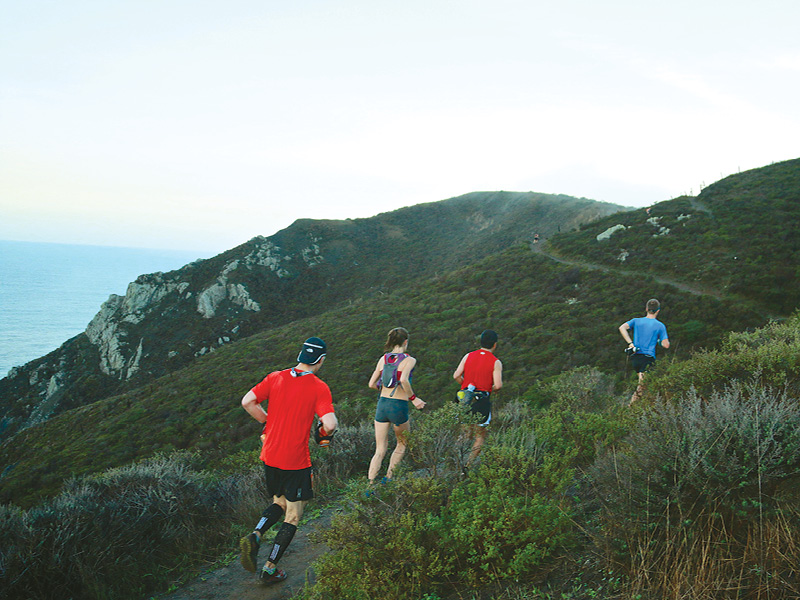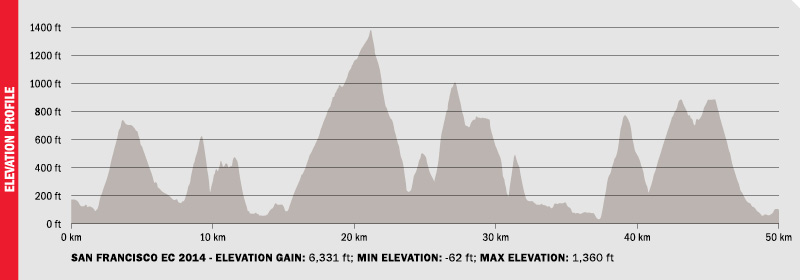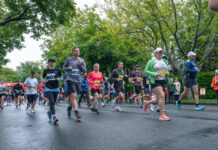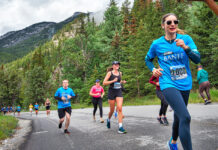
Training for any event requires determination and, ideally, foresight. The growing global popularity in ultramarathons (races longer in distance than the 42.2K marathon) means many runners venturing into unknown territory on race-day and in preparation.
Ultras are held in all types of environments around the world. They are run on road, track and trail, in deserts, forests and jungles, high mountains, plains and even frozen tundra. The differences encountered when training and preparing for an ultra arise in set (our physical and mental self) and setting (the courses we run). Ultrarunning is a nascent sport and few resources focus on building training plans that can tackle the entirety of the variety in distances, terrains and climates. And so, many ultrarunners tackle training as an experiment of one.
My participation in the sport spans seven years and so, I am a novice with only a shallow understanding of the deep well of possible experiences. However, I have come to understand that effective training for an ultra is benefited from a fine blending of base fitness and course-specific training — working toward aligning your personal set with the intended setting of your upcoming ultra.
Here is my approach to training for my most recent ultra, The North Face Endurance Challenge championship in San Francisco. The Endurance Challenge is a series of races across the U.S. and Canada that include events from 5K up to 80K. The San Francisco course is nearly all single-track trail and dirt fire roads. Though not very technical, the ultra events include a significant amount of climbing (more than 2,050 metres in the 50K and 3,050 metres in the 80K).
Base Training
Ultrarunning is the act of running taken from some pleasant middle ground and stretched to the extremes of human ability and potential. The practice of racing is, therefore, founded in the base training undertaken over the course of many weeks, months and years. Base training should comprise the bulk of all training and be conducted within your aerobic heart rate zone — at paces that allow for unlaboured conversation.
My base for the EC was made up of my entire 2014 season, which included 11 months of training and 20 races ranging from 8K to 193K, in addition to the past seven years of ultrarunning. During training weeks (those outside of tapering and recovery) I ran between 115K and 160K. During taper and recovery weeks (those bookending races) I ran between 40K and 60K.

Course-Specific Workouts
Every ultra is its own unique beast. Unlike most road races and marathons, ultramarathons do not fit within a common design. Therefore, those training for an ultramarathon should include focus on their upcoming setting, adding race-specific work into their training. These are examples of workouts that aided me given the unique profile and nature of the EC course:
1. UPHILL/DOWNHILL REPEATS
Alternating Ascent and Descent
The EC course includes many hills with a few longer than 1K. The longest is 7K of switchbacks and climbing to the course’s turnaround. The course includes equally sustained descents that trash unprepared quads leaving little left for the finishing miles. My workouts included both uphill and downhill repeats:
- 15 minute/2K warm-up on flat trail or pathway;
- 6-8 repeats on a 1K hill that sports a fairly consistent grade of 8 per cent;
- Each repeat included 1K ascent, rest, 1K descent and rest;
- Uphill repeats were run between 4:00/K and 4:30/K (approaching anaerobic threshold) pace followed by 90-120 seconds of rest at the summit;
- Downhill repeats were run as hard as possible to push my quads and simulate the trashing that would occur during the race; my pace was kept to between 2:45/K and 3:00/K pace. I ended the repeats when I was unable to run under 3:00. Descents were followed by 90-120 second recovery prior to the next ascent;
- 15 minute/2K cool-down on flat trail or pathway
Horrible HillCrest
I use this workout as a tool for building pain-tolerance, strength and confidence. This technique can be used strategically during a race to pull away from competitors. The knowledge of being able to push yourself is a valuable tool to bolster morale when struggling through a difficult mental space:
- 15 minute/2K warm-up on flat trail or pathway;
- 8-10 repeats on a 200m long hill with a grade of 10-15%;
- The ascents were run at a pace faster than my anaerobic threshold (I was breathing heavily by the time I reached the hillcrest). Upon reaching the hilltop, I sprinted at maximal speed for an additional 200m;
- I ran slowly back to the base of the hill to provide recovery for the next repeat;
- Often runners relax upon reaching the top of a hill. Those who can continue at a consistent pace can put a hurt on those near them. Those who can accelerate will often find they have gone on ahead;
- 15 minute/2K cool-down on flat trail or pathway.
2. PROGRESSION RUNS
Progression runs are excellent tools for building confidence and the physical and mental strength required in the later stages of any ultra. The following is one progression run I included in my lead up to the EC:
- 30K entirely on trail (single-track and dirt-path) to simulate race environment;
- The trail was out-and-back to allow for easy measurement of first and second halves;
- The first 3K were a warm-up at well below aerobic level;
- I noted my time for the remainder of the first half and increased my effort (i.e. faster pace) during the second half to achieve a negative split;
- In trail running, holding to a particular pace may be inappropriate, improbable or just not make sense, given changing terrain. Focusing on perceived effort often is a better gauge than kilometre splits during an ultra.
- The final 3K were a cooldown at well below aerobic level
3. STRENGTH TRAINING
The integrity of my body is an essential component of me being ready to run on race day. I practice strength training a couple of days each week to help maintain strength, balance and overall muscle stamina. Two particular styles of strength training have improved my trail and ultrarunning. They include, predominantly, body-weight exercises done with a focus on core strength, balance and full-body movement:
- Mountain Athletics: An online app providing exercises, videos and a training schedule is available for free at www.thenorthface.com.
- Circuit training: The workout includes 70-minutes of bodyweight, core exercises integral to running — lunges, squats, planks, bridges, balancing and loud music. Incredibly difficult and incredibly fun. For more information, look for a circuit class in your city or town.

















